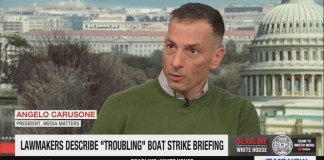The export deal may be a sign of China raising its ambitions for cleaner steel. The national government had set a target for 15% of steel coming from EAFs by the end of this year. But that steelmaking capacity has remained at 10% for more than a decade.
Part of the problem is that provincial steel targets are at odds with the policies set in Beijing. Though the national government opened China to imported scrap steel that could be used in EAFs, imports halved in 2024 compared to the previous year, according to the Centre for Research on Energy and Clean Air analysis. Ten provinces, meanwhile, ramped up production of coal-made steel in the first half of this year, bringing down prices and disincentivizing more costly green investments, said Xinyi Shen, the China team lead for the Finnish nonprofit, who authored the report.
But if China can deepen its stockpiles of scrap steel, the country could more quickly build out a lower-carbon steel industry using EAFs while it waits to improve technology on green hydrogen that can bring down costs of fully decarbonized steel, Shen said.
“This is a more promising way to produce low-carbon steel,” she said. “For hydrogen steelmaking, it depends on the progress of green power.”
The bottleneck, she said, is “always the feedstock for DRI.”
But two recent policy changes on renewable power could incentivize Chinese companies to use more of the nation’s vast solar and wind resources to generate green hydrogen.
The first, called the 430 policy, took effect on May 1 and requires that new distributed solar arrays — like those on buildings’ rooftops — first power the facility they are sited on before selling any surplus electricity onto the grid. The second, dubbed the 531 policy, eliminates the guaranteed “feed-in tariffs” that renewables projects long benefited from in China, and requires new solar and wind farms to sell electricity on the spot market.
Whether policies that direct renewable power away from the grid benefit hydrogen producers by making that power more available to them depends on the provincial-level strategies for the fuel, which vary, Shen said. But the emergence of overseas buyers willing to pay more for steel made with green hydrogen could drive the market, she said.
A ‘significant’ attempt to ‘seize commercial opportunities’ in Europe’s steel market
Starting next year, the European Union, of which Italy is a founding member, is set to fully implement its Carbon Border Adjustment Mechanism. The carbon tariff essentially levies an extra cost on imports made with more planet-heating pollution. That means China’s coal-fired steel is about to become less competitive. While China could ramp up scrap-based EAF steel, Shen said the quality of that product tends to be very low, making it unappealing for export. The Italy deal, according to the Boston Consulting Group, shows the levies are creating a market for truly green material.
“This development holds significant implications,” Nicole Voigt, the Boston Consulting Group’s global lead of metals, told Canary Media. “China’s commitment clearly highlights its intent to seize commercial opportunities in the green steel market, especially in Europe.”
It’ll take time for the cost to come down. But China “overall has a long-term direction for carbon neutrality,” Shen said. “This gives companies and investors confidence and certainty to invest into newer technologies.”
“The investment into these new technologies will need a long, stable policy environment,” Shen said. “Long-term, the political goal is there here in China.”
Great Job Alexander Kaufman & the Team @ Canary Media Source link for sharing this story.





